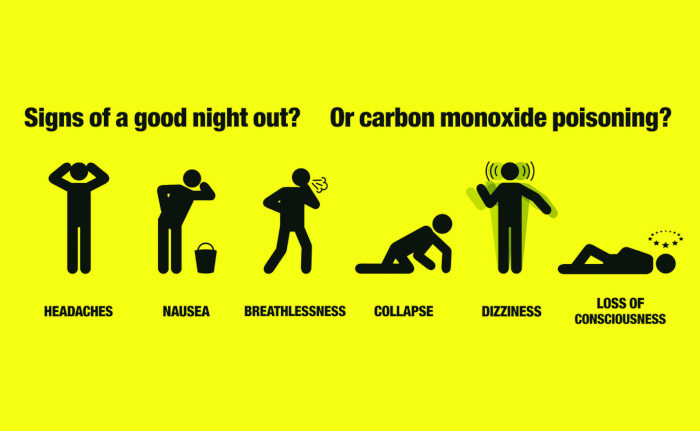
- #CARBON MONOXIDE POISONING SYMPTOMS BOAT INSTALL#
- #CARBON MONOXIDE POISONING SYMPTOMS BOAT GENERATOR#
- #CARBON MONOXIDE POISONING SYMPTOMS BOAT WINDOWS#
When carbon monoxide enters your lungs it reacts with blood haemoglobin and reduces the oxygen carrying capacity of the blood. Do not wait for symptoms and do not ignore your alarm-take appropriate action to ensure the safety of all on board. It is possible that you may not be experiencing symptoms when you hear the alarm. Carbon monoxide sensors monitor the level of the gas and make an alarm sound before carbon monoxide levels become hazardous. Be aware that carbon monoxide can stay in or around your boat at dangerous levels even if your engine or the other boat's engine is no longer running! Carbon monoxide alarmsįitting and maintaining carbon monoxide detectors and alarms is a good way to minimise the risks of carbon monoxide poisoning. Carbon monoxide from the boat docked next to you can be just as deadly.Īt slow speeds, while idling, or stopped. Inadequately ventilated canvas enclosures.Īnother vessel's exhaust. When in doubt, err on the side of safety and exclude entry to these spaces until safe access can be assured.Īll boat owners and operators should watch for these situations: Owners and operators of larger boats should also make sure entry into confined spaces such as sealed void spaces, fuel tanks, sullage tanks, battery storage compartments and compartments where harmful gases may be present can, and is, done safely-the Australian/New Zealand Standard 2865 – Confined spaces provides a minimum level for safety compliance in this area. Sources of carbon monoxide on your boat include:īoats with partially-enclosed cabins, wheelhouses or passenger accommodation are at higher risk because exhaust fumes (including carbon monoxide) that are discharged overboard can be drawn back into, and accumulate in, these areas.Ĭarbon monoxide will also collect in areas of the boat near exhaust outlets, such as the swimming platform and during activities like teak surfing, wake surfing and water skiing close to the stern. Carbon monoxide on your boatĬarbon monoxide can accumulate anywhere in and around your boat in all weather conditions and when the boat is moored, anchored or underway. You can't smell it, see it or taste it, but it can pose a real threat to the personal safety of those on board your boat.
#CARBON MONOXIDE POISONING SYMPTOMS BOAT GENERATOR#
Follow all warnings and instructions for canvas, engine, generator and blower operations, etc.Carbon monoxide is a toxic gas made by incomplete ignition or burning of carbon-based fuels like petrol, propane, charcoal, wood and oil.Engines and generators that are not tuned properly produce more CO.


#CARBON MONOXIDE POISONING SYMPTOMS BOAT INSTALL#
Install and maintain approved marine-grade CO detectors.Maintain fresh air circulation throughout the boat at all times.Changing course and speed to place the boat heading into the wind can improve ventilation.CO can also be present without the smell of exhaust fumes.If you can smell engine or generator exhaust, you are inhaling CO.
#CARBON MONOXIDE POISONING SYMPTOMS BOAT WINDOWS#
Turn off all engines and/or generators and open all hatches, windows and ports to ventilate.

Know where and how CO may accumulate in and around your boat.Seek medical attention-unless you’re sure it’s not CO. Get the person into fresh air immediately.Treat symptoms of seasickness as possible CO poisoning.


 0 kommentar(er)
0 kommentar(er)
